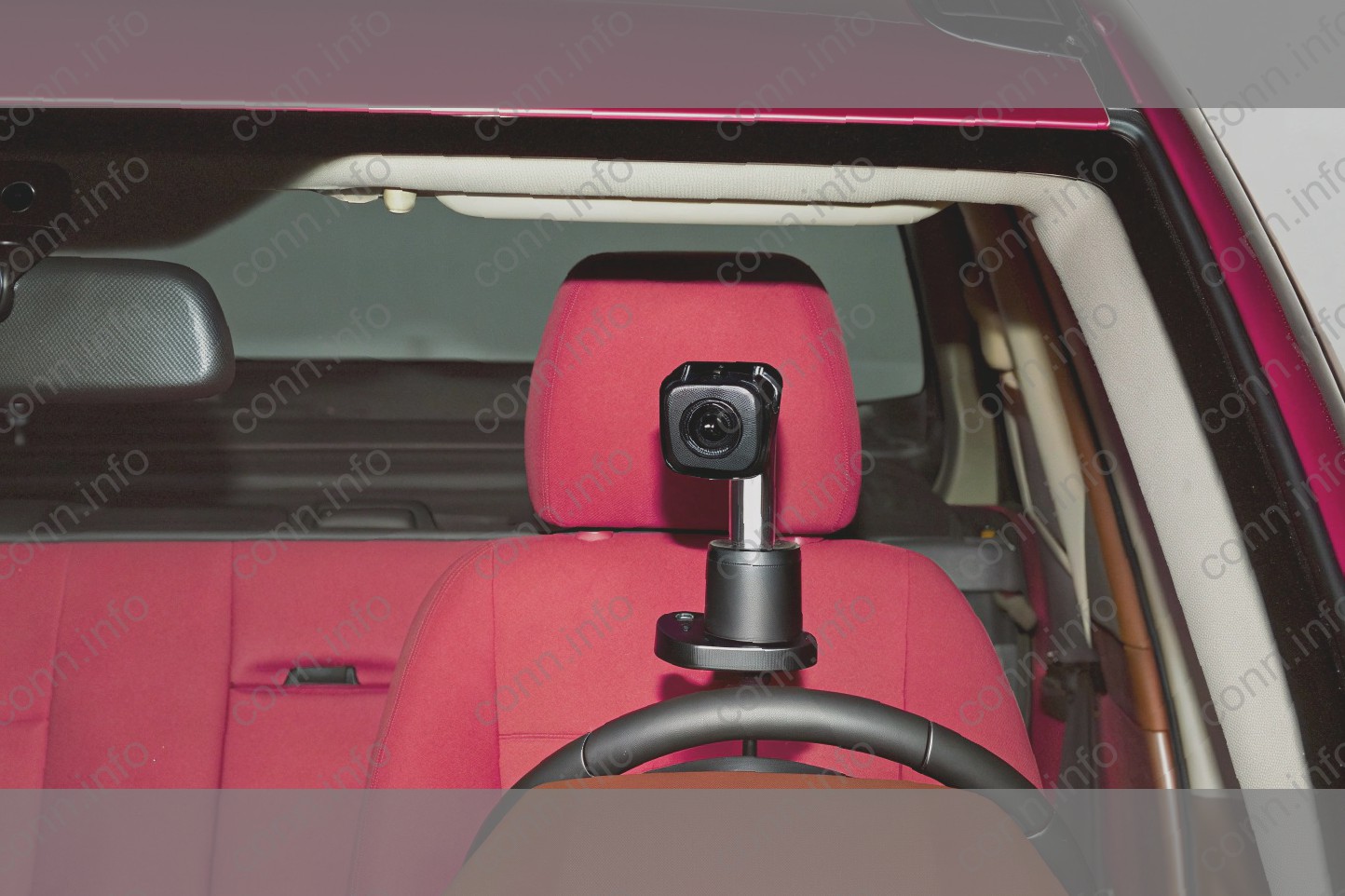Overview of Driver-Facing Cameras
Driver-facing cameras, also known as cabin view or inward-facing cameras, are devices mounted on the inside of vehicles that record footage of the driver. These cameras have become more prevalent in various types of vehicles, including trucks, buses, and personal vehicles. The primary purpose of driver-facing cameras is to monitor the driver’s behavior while operating the vehicle, particularly in commercial driving. Such cameras can provide insights into driver fatigue, distraction, and overall attentiveness, which can be critical in preventing accidents and improving road safety.
In recent years, the use of driver-facing cameras has increased significantly due to advancements in technology and growing awareness of the role that driver behavior plays in vehicle safety. With higher-resolution cameras and more advanced recording capabilities , these devices can now capture more detailed footage and provide more accurate data. The availability of such technology has also made it easier and more affordable for companies and individuals to install and maintain these cameras in their vehicles.
Moreover, as more and more vehicles are equipped with advanced driver-assistance systems (ADAS), the integration of driver-facing cameras as part of these systems has become increasingly common. ADAS technologies rely on data from multiple sources, including sensors, cameras, and vehicle systems, to provide real-time feedback and warnings to drivers. Driver-facing cameras can complement the data collected by ADAS systems by providing additional information about the driver’s behavior and condition.
As driver-facing cameras become more common, it is essential for vehicle users and owners to understand the implications of having such devices in their vehicles. From privacy concerns to data storage and retrieval issues, there are a number of factors that need to be considered.
Legal Regulations Surrounding Driver-Facing Cameras
The legality of driver-facing cameras is a changing landscape. Rules and regulations and how they are interpreted can vary from state to state and country to country. However, there are some similarities.
United States/Canada
Many states now require driver-facing cameras, or regularly monitor the cameras. That includes in states like Washington, Maryland, and Montana. Several U.S. states and Canadian provinces have proposed various laws and regulations regarding the use of driver-facing camera technology in commercial transportation. These proposals are a mix of clear restrictions and other statutes which apply only to broader temporary monitoring programs. While some of these laws are still under review, other laws have already passed but are not yet in effect, as they are subject to final specifications which have not yet been issued. Some state laws in the U.S. specifically govern this technology for passenger carriers, while others prohibit the transmission or retention of any video or audio, specifically of drivers. Many of these laws are found in the forms of proposed driver safety or "hands-free" legislation, but are yet to go into effect. Other states include prohibition of these technologies in employment privacy laws, where regulatory agencies specifically address the use of video monitoring systems in commercial motor vehicles. Other states and Canadian provinces have not yet taken any action on this technology, but have introduced resolutions to study or recommend future action (such as the case in Minnesota.) In the U.S., the federal government, via the Federal Motor Carrier Safety Administration, has not yet issued any regulations addressing driver-facing cameras in commercial motor vehicles.
Europe
As of January 2019, The European Data Protection Board (EDPB) adopted their first Guidelines on Data Protection by Design and by Default, outlining key principles from the EU General Data Protection Regulation (GDPR). As the Guidelines relate to visual monitoring (i.e. video surveillance), they modify the strict reference to Art. 11 GDPR concerning the transparency duties for CCTV systems, in that the EDPB considered that such obligations do not apply to driver-facing cameras on board commercial transport vehicles. Namely because such cameras are not subject to commercial monitoring systems, which the driver cannot reasonably identify the presence and/or scope of use of the installed cameras. In addition: no effective tools for objecting exist for the drivers and employees. In their statement, the EDBP specifically notes that the mere fact that drivers are aware of the presence of cameras and operators’ explanation of the purpose of such cameras is not a valid ground to assume that employees object to driver-facing cameras. It should be noted, however, that the Statement refers to art. 5(2) of the GDPR concerning transparency. In other words, it does not affect the application of other sections of the GDPR. As regards passenger-facing images, the Guidelines are silent. In practical terms, this means that a passenger-facing camera will be considered entirely different to a driver-facing camera, and the established nationality of the passenger must be taken into account to establish the correct legal approach. Under the GDPR, controllers must respect the principle of data minimization, and ensure that the data processed is limited to what is necessary in relation to the purposes pursued. Paging systems are no exception to this obligation, and care should be taken to avoid excessive processing.
Driver Privacy and Rights Issues
Driver-facing cameras pose privacy issues from a variety of angles. For example, an individual may be concerned about when and how the camera footage is being used (and by whom). The stored images and video may be subject to data breaches that compromise the individuals’ privacy. And, information captured by the cameras could lead to criminal prosecution, or otherwise be used against the individual in a legal situation.
With that said, however, there are some putative protections for the individual. Pursuant to Federal Motor Carrier Safety Regulations ("FMCSR"), these cameras record when either a driver, or the vehicle operator is operating a commercial motor vehicle. The camera automatically turns on when a critical event occurs, or the driver has an incident. The FMCSR prohibits a driver being disciplined or penalized solely on the basis of a driver-facing camera image or video. Use of the information collected by the camera must still conform to privacy and legal procedures, and employers are still required to provide notice of collection of personal information, and the purpose of that collection. Additionally, if the information is going to be shared, the individual must be given advance notice.
However, such protections are dependent on both state law and the terms of the individual’s employment. Under certain laws, an individual may be prohibited from being terminated based solely on driver-facing camera imagery, if that imagery is being used to discipline or penalize the individual.
Advantages of Driver-Facing Cameras
The benefits of using driver-facing camera include improvements to both safety and accountability. Driver-facing camera are able to detect signs of fatigued or distracted driving and provide alerts for risky behavior for compliance with FMCSA regulations. This improves overall fleet safety in two ways: Reduced Insurance Liability – According to FMCSA statistics, 60% of all accidents can be attributed to driver error. As a result, our nation’s commercial trucking industry suffers approximately $60 billion per year in liability costs. These costs are passed on to consumers in the form of higher prices for goods and services, as trucking companies must pay to cover accidents when they occur. Using driver-facing cameras and forward-facing cameras to detect fatigued, distracted, or reckless driving, both of which contribute to driver error , will help to reduce the amount of insurance coverage a company is required to carry and thus reduce overall insurance costs. Improved Driver Behavior – By knowing their behavior is being monitored by an unbiased camera system, your drivers will be more likely to drive responsibly and safely at all times, including while driving with a heavy load and in inclement weather. A large portion of the $60 billion a year in liability costs that the industry faces is due to distracted driving, distracted driving, in turn is directly caused by drivers not paying attention to the road, but focusing on their phone, their lunch in their lap, the newspaper, or even their GPS. Your drivers will understand this, and they will act more responsibly and pay more attention to the road, if they know they are being monitored by an unbiased camera system.
Legal Compliance and Best Practices
Businesses and drivers can take several steps to ensure compliance with driver-facing camera laws. First, they should be familiar with the laws that apply to them. Businesses need to understand not only the laws applicable to their operations but also the laws that apply to driver’s use of devices while the driver is working. Then, when they implement driver-facing cameras, they must display required notices in the workplace or on the vehicles in which cameras have been installed.
Businesses should carefully analyze, and create a plan for implementing driver-facing cameras. This plan should address: When implementing business practices, it is helpful to develop a plan and rules for driver-facing cameras. The rules should cover details such as what data can be downloaded from the camera and who will review this data. It is advisable to review all available data and edit it so that irrelevant data is not included in data retention policies.
As stated above, employers should post notices in the workplace notifying employees that the workplace can be monitored by driver-facing cameras. The notice should explain that: (1) the purpose of the driver-facing camera is to monitor and improve the safety of commercial motor vehicle operations; (2) the cameras can record both video and audio data; and (3) the driver-facing camera will be on while the vehicle is in motion.
If an employer has a smartphone policy, the policy should prohibit drivers from using a smartphone while driving, including when operating a commercial motor vehicle.
When implementing any policy that may result in discipline against employees, there must be policies in place to explain how discipline is decided. Employees should not be disciplined for a recording captured on a driver-facing camera unless there is guidance in place to show how the discipline was determined.
Future Directions of Driver-Facing Camera Laws
As driver-facing camera regulations continue to evolve, there are several potential changes on the horizon. One area of focus is the use of facial recognition technology in conjunction with driver-facing cameras. As facial recognition software becomes increasingly accurate, regulators may implement stricter guidelines for its use and establish more robust privacy and transparency policies. Companies that take a proactive approach to addressing concerns about their use of these cameras and increasing transparency will be best positioned to comply with forthcoming laws and regulations.
Another potential trend is the increased imposition of fines on companies that violate existing regulations. Enforcement actions have already occurred against companies that have mishandled data collected by driver-facing cameras or had not obtained appropriate consent from drivers . As accidents and incidents continue to arise related to the use of these systems, regulators may become more aggressive in holding companies accountable for their actions. Thus, it is critical that companies educate their drivers on the various operations and capabilities of driver-facing cameras.
In addition, there is the potential for more prescriptive regulations that could restrict the circumstances under which driver-facing cameras may be used. Such regulations would require automotive manufacturers to carefully consider the technological implications of any devices they develop. Furthermore, enhancements to driver-facing camera technology itself will continue to drive use and push regulation. As the capabilities and features of these cameras evolve, so too will applicable laws and regulations.



